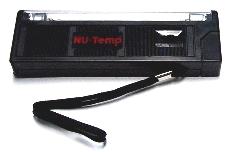Pivzavod
Well-Known Member
So I think I have some nasty wild yeast living inside my kitchen. Can I nuke it with a UV light sanitizer?













![Craft A Brew - Safale S-04 Dry Yeast - Fermentis - English Ale Dry Yeast - For English and American Ales and Hard Apple Ciders - Ingredients for Home Brewing - Beer Making Supplies - [1 Pack]](https://m.media-amazon.com/images/I/41fVGNh6JfL._SL500_.jpg)
I will go back to my last post and reiterate that if you had an infection it is most likely not from the air but rather poorly sanitized equipment. I have hydrometer sample sitting in the garage two weeks open to the air...at first I was too lazy to clean it and now its kind of an expirement...anyway, not one trace of infection.
Given how you describe the off taste as "ass," if you live with male roommates I wouldn't rule out the possibility of a practicle joke on their part either
Wild yeast is not UV-sensitive. Billions of years of exposure to the sun has killed the weak ones off.

I think it could be useful for certain things, certainly not sterilizing everything in your kitchen. But if you had a cabinet set up with a reflective surface inside and high strength UV bulbs to put your caps, wine thief, bottles, auto siphon, tubing, and stuff like that in it would make a great storage unit as well as a quick way to sanitize things before you need them, flip the switch on the side, wait about a minute, turn it off and then open it up and grab your stuff.
I got this idea from my chemistry labs in collage, we had a small version of those cabinets for our safety goggles, my professor would set a timer for 30 seconds and then we could grab a nice sterile pair of goggles before we went about our work.
I am starting a DIY project to build a dead air box similar to this one http://www.aircleansystems.com/app_pcr2.htm Most of the parts can be bought straight from amazon and will be substantially cheaper than buying one of these units for $2000. The lexan will cost around $150, plus $32 for a sheet of 2' x 1' x 1" polypropylene (showed up yesterday) to act as the base, $40 - $60 for two 18" 15w UVC bulbs plus balasts, and add in costs for hinges and screws. I think I'm also going to rig up a UVC airfilter (http://www.guardiantechnologies.com/GG1000-Pluggable-UVC-Air-Sanitizer-Details.html) with a preaction HEPA filter to make it a dual use dead air box/positive pressure system for about $75 more.
The lexan should filter out the UVC light but even if this is the case you should ALWAYS BE CAREFUL WHEN USING UVC light. You can cause serious injury to yourself and others if not handled properly as a previous poster stated. As such I will be rigging a timer for the lights similar to the professional system. I figure since their systems have timers from 15 to 25 min typically I'll probably run the positive pressure system for 10 min to push all the old air out and then seal it and run the UVC cycle for 30 min.
As soon as I get the pieces in and build I'll post pictures of the construction in a new thread. Hopefully I can then make some check plates for the kitchen, the dead air box and the box with positive pressure system turned on to verify the validity of the project.
I'm pretty sure the right UV lamp will kill almost all yeast and bacteria. The sterile laminar flow hood in the lab is equiped with one that we use to kill everything. There may be a difference in exposure time to kill one versus the other. Actualy I do know that some microbes are more sensitive than others to UV light.
When I was in grad school there was a grad student I knew in another lab that had never worked in a hood before and she unknowingly turned on the UV light (versus the fluorescent) and proceeded to do several hours of work. She toasted her retinas and had to wear eyepatches for several days while her eyes healed.
That being said, this is not terribly practical, as you'd probably have to build some kind of flow cell so you could expose a small amout at a time while moving it past the UV light.